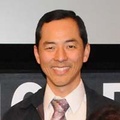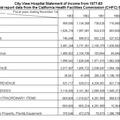Read Part 1 >>
MEDICAL LICENSURE OF THE JAPANESE PHYSICIANS
Typically, to obtain a license to practice medicine in California required the applicant to show proof of prior schooling, attestations of good moral character from other physicians, and the passage of an exam given by the State medical board in English.
The case of Isami Sekiyama, MD, illustrates the process.1 He applied to take the State Board of Medical Examiners exam in two successive years.
After finishing a year of post-graduate medical education at the general clinics of UCLA, Sekiyama applied for the June, 1918 examination. For this purpose he furnished a sworn deposition outlining his previously completed studies in Japan and the United States. He also supplied a translation of his medical school diploma, certified by the Consul of Japan as being a correct translation. He was also required to supply, but at the time did not, a document showing his hours of completed study in specified areas of medical knowledge. The law specified 26 categories of study arranged into eight different groups, each with its own minimum required number of hours:
Group 1 – Anatomy, Embryology, Histology; Group 2 – Chemistry, Toxicology, Physiology: Group 3 – Bacteriology, Hygiene, Pathology; Group 4 – Materia medica, Pharmacology, Therapeutics; Group 5 – General medicine, Pediatrics, Genito-urinary diseases, Nervous and mental diseases, Dermatology, and Syphilis; Group 6 – ENT, Ophthalmology, Surgery, Orthopedic Surgery, Physical Therapy including X-ray, electrotherapy, radiotherapy and hydro-therapy; Group 7 – Gynecology, Obstetrics; Group 8 – Miscellaneous, including ethics.
Sekiyama enumerated his completed hours of study, but did not at that time provide documentation. He was admitted to take the June exam after paying a twenty-five dollar fee.
Interestingly, in a letter dated June 20, 1918, Sekiyama was offered an opportunity to take the exam with the aid of a translator. The exam was normally conducted exclusively in English. However, during World War I, due to shortage of physicians these Japanese applicants were able to take the exam with the aid of a translator. Over 10 Japanese physicians passed the exam with this provision.2 Apparently, Sekiyama did not choose to take the exam in Japanese. Shortly afterward, a suspicion of illegal practices arose and this provision was abolished.
Since he did not pass with his first attempt, Sekiyama arranged to take the exam the following March. The State board replied, requesting that he supply documentation from Japan verifying the subjects he studied and the hours allotted to each. Thus his admission to the March 17, 1919 exam was deferred pending receipt of these documents, which were delayed by the 2-month ship passage from Japan. In May the documents arrived and, as required by law, were translated over the seal and signature of the Consul of Japan. At that time Sekiyama was at New York Post Graduate College and had an Issei dentist complete his arrangements for the two day exam in October. He was successful on his second attempt, and from then on simply needed to pay a $2.00 annual tax payment to keep his license.
Other Japanese physicians pursued alternate methods of acquiring a California license. Some passed the licensing exam in other states such as Arizona, Nevada and Hawaii, and applied for reciprocity. Most, however, seem to have persisted in studying until they succeeded in passing the exam. A small number, in fact, had studied at medical schools in the United States, which would have facilitated their passing the state exam.
To apply for a midwife’s license entailed similar requirements. One needed a translation certified by the Consul of Japan of documents specifying the course of study. A physician or licensed midwife attested to the applicant’s good moral character. Finally, the applicant needed to have helped perform a certain number of deliveries under the supervision of a licensed midwife, and thus the names of mothers and infants were attached. Apparently there was no licensing exam. Many of the applicants already had licenses from county governments in California before applying for the State license.
SOURCES OF INFORMATION ON JAPANESE HOSPITALS
Documented evidence on the rise of hospitals within the Japanese communities proved very difficult to find, and what I found tended to be sketchy in nature. The Japanese American Times, published from the early 1900’s in San Franacisco (now the Nichi Bei Times) contains advertisements from all the local Japanese businesses in its New Year’s edition. Unfortunately I did not have an opportunity in the study period to find a translator. At the start of the study I had solid evidence only about the Japanese hospital of Los Angeles, and had heard rumors of others in Sacramento and in Fresno.
One of the physicians associated with the Los Angeles hospital, Y. Fred Fujikawa, MD, referred me to Kikuo Taira, MD, in Fresno. Dr. Taira knew the sites of all the Japanese hospitals in Fresno and introduced me to the daughter of one of them (Okonogi Sanitarium) and to the wife of the operator of another (Hashiba Sanitarium).
Dr. B. Okonogi’s daughter, Ena Sakamoto, mentioned that she donated some of her pictures of her father’s hospital to the State Office of historic preservation. This trip led me to Eugene Itogawa, historian with the Office of historic preservation in November. He knew of five sites, which included Los Angeles, Sacramento and Fresno, as well as Stockton and San Jose. His office is currently engaged in publishing a collection of old photographs of the Japanese community which includes pictures of the Fresno, Stockton and San Jose hospitals as well as some of the midwife clinics.
In regard to Sacramento’s hospital, Wayne Mayeda from the Ethnic Studies Department of California State University, Sacramento was a large help, as well as pharmacist Louis Seto and insurance agent Tom Furukawa – both long time residents of Sacramento. Wayne Mayeda had recently researched the history of the Japanese community in Sacramento for the Sacramento History Center, and his paper was not readily available, being in press. Even so, I was able to meet Agnes Miyakawa, the daughter-in-law of the founder of Sacramento’s Agnes Hospital.
The articles of incorporation of the Stockton Hospital and the Japanese Hospital of Los Angeles provided some additional details. Finally, Shin Hasegawa’s book provided a wealth of information on the Los Angeles health scene in the Japanese community. Although its author believed that Los Angeles possessed the only Japanese hospital, the book provides some insights into the background of all the hospitals.
Notes:
1. Professional and Vocational Standards, Medical License Board, Minority Physicians, California State Archives, Office of the Secretary of State, Sacramento.
2. Shinichi Kato, ed., Nan-Kashu Nihonjin Shichijyu-nen Shi (Los Angeles: Japanese Chamber of Commerce of Southern California, 1960), p. 459.
© 1986 Troy Tashiro Kaji




